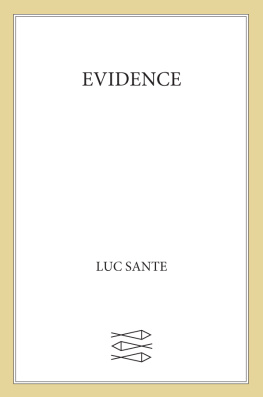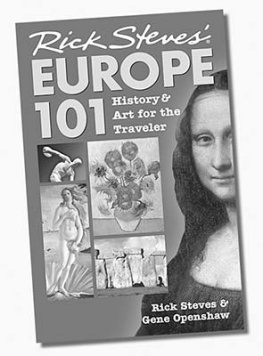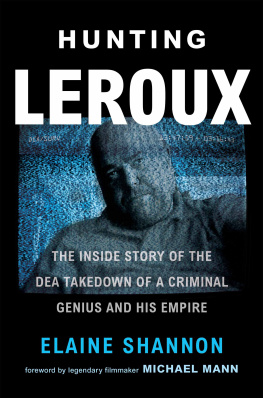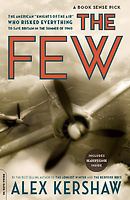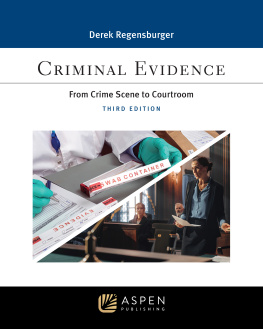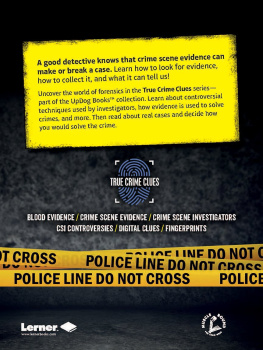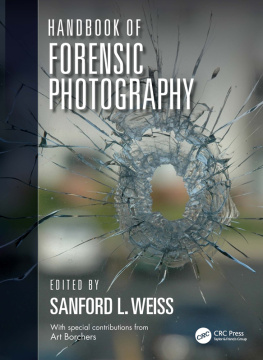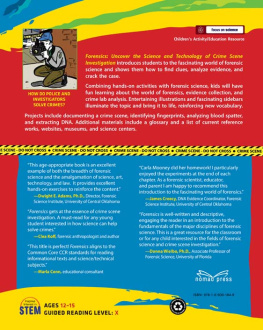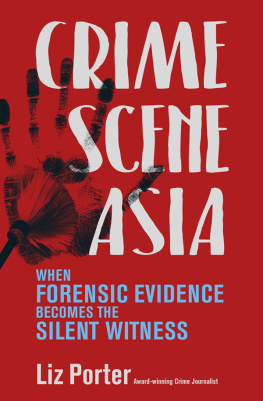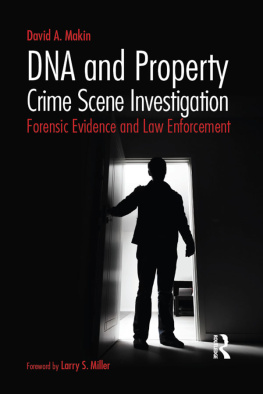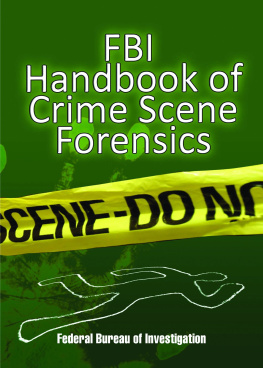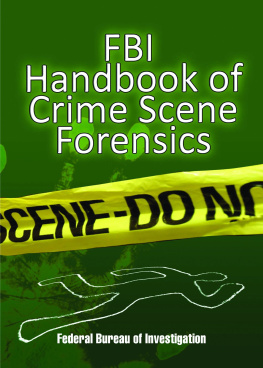Contents
Guide
EVIDENCE LUC SANTE
Farrar, Straus and Giroux New York
The author and publisher have provided this e-book to you for your personal use only. You may not make this e-book publicly available in any way. Copyright infringement is against the law. If you believe the copy of this e-book you are reading infringes on the authors copyright, please notify the publisher at: http://us.macmillanusa.com/piracy.
To Melissa Pierson

Time in its passing casts off particles of itself in the form of images, documents, relics, junk. Nobody can seize time once it is gone, so we must make do with such husks, the ones that have not yet succeeded in disintegrating. These forms repose in cardboard boxes and closets, in old houses and attics, in filing cabinets and mini-storage warehouses, in museums and libraries, in archives. In a great city such as New York there are collections of artifacts and boneyards of information everywhere. Among these are dissertations that will never be read, codes that will never be deciphered, objects whose particular import will never be understood, and the traces of innumerable human beings lost to history once and for all, without monuments or descendants or living memory, just a name somewhere in an official record consulted rarely if at all.
The Municipal Archives, which occupies a lower corner of the impressive old Beaux-Arts Surrogates Court building at Chambers and Centre streets, contains birth and death and marriage records, the files of former mayors and district attorneys, the leavings of city commissions and departments. It is a cool place, well lit, not musty. Every day a scattering of historical researchers and a larger number of genealogists sit at the microfilm readers dowsing their way through copies of, say, the 1895 Police Census, looking for a faint footprint that may have been left there by someone who cannot be recalled in any other fashion. I went there while I was working on my book Low Life, not looking for any specific or exact documents, just for clues to what things were like in the citys slum and vice districts a hundred or so years ago. I didnt know what the archives possessed, exactly, and I was pursuing the non-method I used for that research, which consisted of trusting in a certain magnetic chargeI would know what I was looking for when I saw itand then passing streams of miscellaneous data in review. In that spirit I worked my way fruitlessly through the microfilmed photographic collection of the Department of Docks and Wharves (most of the pictures obliterated by moisture, acidity, or general decay), the endless negative copies of precinct blotters in spidery copperplate script, interminably recording drunk-and-disorderly charges against forgotten persons on forgotten nights, and sundry other files of, to me, intangible interest.
It was, I think, on my third visit that Kenneth Cobb, the director of the archives, wondered if Id be interested in seeing the Police Department photo collection. I gulped and said yes, and presently a library cart was wheeled out from a back room, laden with fifteen fat ring binders in archival boxes. As soon as I pulled out the first volume and began leafing through the pages of prints, my eyes widened. Nothing in the reams of photographic documentation Id sorted throughcountless inert pictures of buildings, posed ranks of functionaries, fuzzy views of empty streets devoid of detailhad prepared me for this. Here was a true record of the texture and grain of a lost New York, laid bare by the circumstances of murder. Lives stopped by razor or bullet were frozen by a flash of powder, the lens according these lives their propertiestheir petticoats and button shoes and calendars and cuspidors and beer bottles and wallpaper. The pictures were not just detailed documents, either, but astonishing works in their medium. I thought I had come across the traces of a forgotten master, who seemed to prefigure the pitiless flashlit realism of Weegee while having affinities to Eugne Atgets passionate documentary lyricism. A style seemed to announce itself, deliberate and inimitable.
Confusingly, the photographs in the albums were organized by no principle that I could detect. The pictures that made me gasp were intermittent, shuffled together with copies of chauffeurs licenses and out-of-town Bertillon records (painstaking lists of criminals body measurements, according to a now obsolete identification method) and magnified views of pieces of jewelry and barely decipherable snapshots. In addition, there were lengthy and boring series of intradepartmental subjects: police dogs, for example, or horses, or studies of urinals at different station houses. There was a copy of a Black Hand threat letter, decorated with obscene drawings, and even an enigmatic set of shots, from various angles, of a mans right hand with two thumbs. I was no more enlightened by the captions, which comprised the fifteenth volume. I discovered, first of all, that although there were 1,400 images in the collection, considerably fewer were actually represented by prints. The negatives were glass plates, and many had cracked or been ruinously chipped, or their emulsion had stuck to the envelopes in which they had been stored. Furthermore, the captions were erratic. A minority were original to the photographs, transcribed from the discarded envelopes; the others, compensating for missing or illegible labels, represented guesses or skeletal descriptions by the archivists. Thus, a truly enigmatic image would yield up no more information than Homicide victim male interior. The most I was able to ascertain was that the pictures dated from between 1914 and 1918 (with a few mug shots from the 1920s mixed in and two photos of a vacant lot bearing a crop of marijuana that dated from 1935). The collection appeared to be a slice of the New York Police Departments documentation that had been extracted, shaken up, and then dropped. I was puzzled as well as stirred, but for my purposes at the time I was satisfied with choosing a few appropriate pictures and having them copied.
But the pictures would not leave me alone. I found that I thought about them frequently, able to recall this or that image in disconcerting detail. I went back a number of times to look at the collection and, finally, plunged into the task of investigating their context and the circumstances of their making. All the while, their mystery increased. Problems and questions appeared in every direction, and each individual picture wove its own tangle. Why had they been taken? Who took them? What sort of truth were they supposed to represent? How did they come to have such a singular look about them? Why had they been preserved, and then neglected, and then preserved again? Why just those five years? What could account for the alternation of horror and emptiness in their depictions? On the horizon loomed some of the most perplexing knots raised by photography, raised anew by these examples: about truth, and transparency, and intrusion, and power, and individual style, and permanence.
I will attempt to address those questions in the following pages, but one of them, at least, can be given its sadly banal answer. It seems that in 1983 or 84, when the city was in the process of cleaning out the old police headquarters on Centre Street as a condition of its sale to private interests, workers removed roomfuls of files from its innards, and those files were dumped into the East River. (This was scarcely unprecedented; a forensic historian, writing in 1961, noted that a few years ago, the NYPD, needing filing space, had taken thousands of its nineteenth-century glass-plate mug shots and likewise consigned them to New York Bay.) The citys archivists were informed too late, but, according to John R. Podracky, then of the Municipal Archives and now curator of the Police Academy Museum, they got there in time to find a small room under a staircase that had been overlooked by the workers. It contained filing cabinets that held those 1,400 plates, housed in manila envelopes, neglected for nearly three-quarters of a century and allowed to deteriorate. All the earlier New York Police Department work in forensic photography, most of the information concerning the surviving pictures, and probably a good deal of the later work as well (the NYPD, citing legal fears, is loath to discuss its archival holdings with outsiders), is lost forever.

